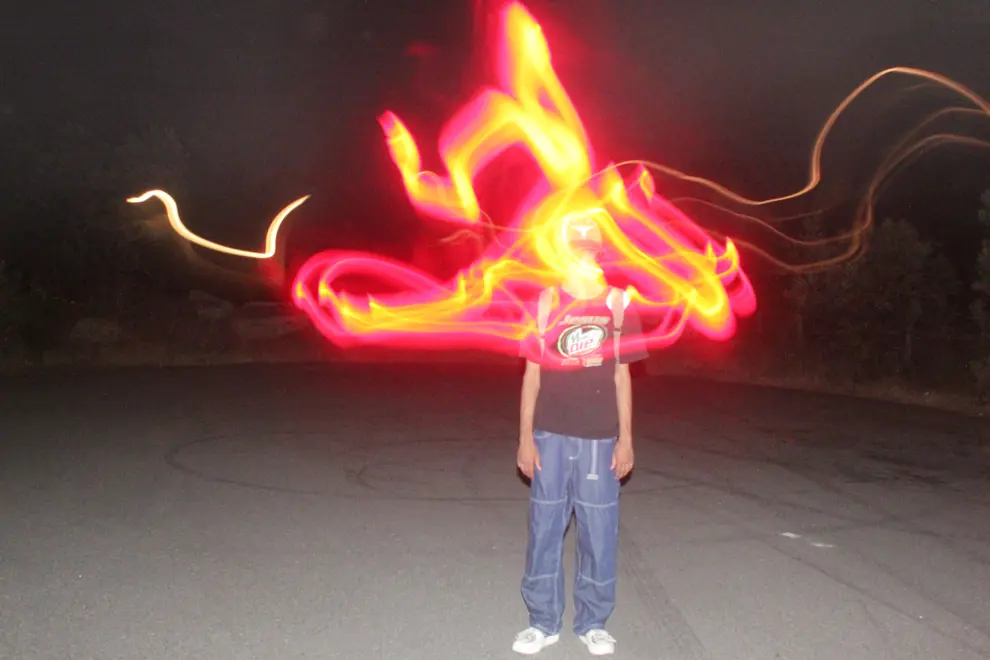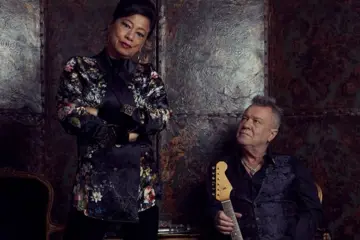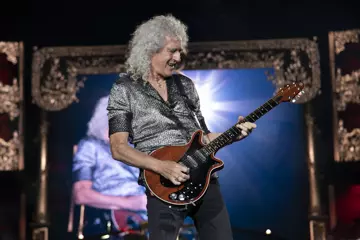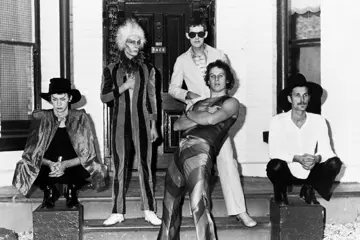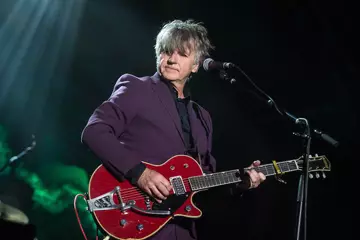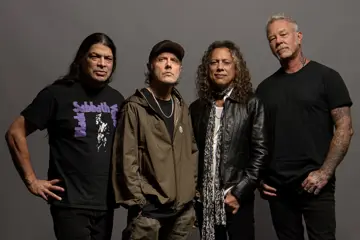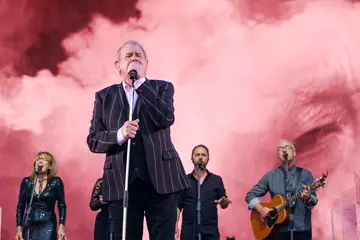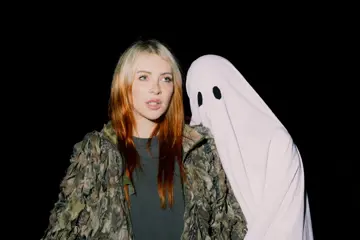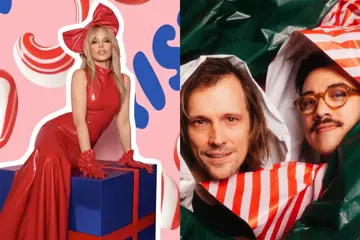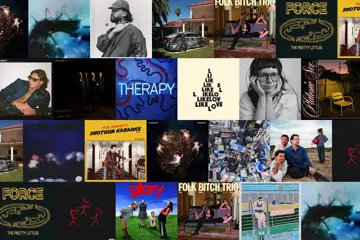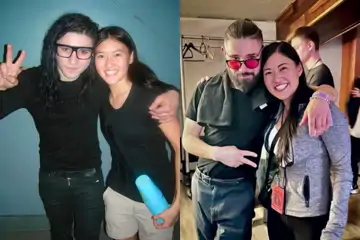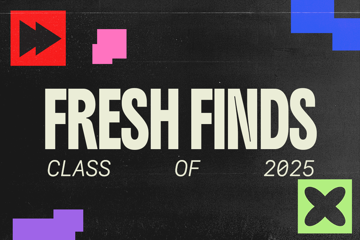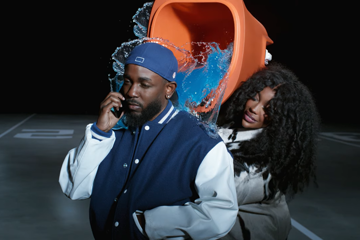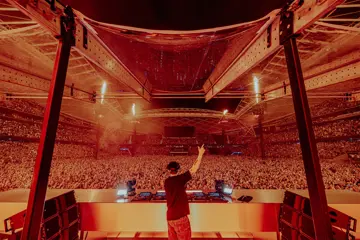Perth producer and songwriter To Oscar has stepped into the spotlight with his debut album, longest road trip of my life. Known for his roots in niche internet subcultures and genre-bending sounds, this release sees him carving a new path in the Australian music scene, stepping out to pursue solo sounds away from cyber-band Webcage.
The album is a wild ride through experimental production, blending hyper-pop, shoegaze, noise rock, and folk into a cohesive, chaotic journey (think Brockhampton blended with the Frutiger Metro style of emerging internet days).
To Oscar describes it as a “12-track chronicling of a strange journey.” It’s a concept album disguised as a mesh of uniquely genre-bending sonic oddities.
From humble beginnings as a bedroom producer to founding member of the internet-based collective Webcage, To Oscar’s career has been shaped by the fast-paced culture of online life. Now, he’s taking the lessons from those years into this ambitious debut, exploring themes of personal growth, creativity, and escapism on a metaphorical road trip.
We caught up with To Oscar to chat about longest road trip of my life, his creative process, and how the album title came to life. Here’s what he had to say.
What inspired this work?
Don't miss a beat with our FREE daily newsletter
I’ve gathered a lot of life experience in the last year and a half, maybe two years. I used to be a very online kid, cooped up in his room all the time, and I feel like I’ve definitely come out of my shell in recent years. I think this album was inspired by this change in my life.
During the writing process, I was really inspired by artists such as Wednesday, feeble little horse and underscores. I really love how those artists have songs with layers of narrative that kind of only become obvious after multiple listen throughs. I often start songs by basically taking elements from other songs that inspire me, until the song I’m working on sounds somewhat unique to me. I went through a period of discovering a heap of new music and artists, in a bunch of different genres while writing the album. I definitely think this is why the album is so all over the place genre wise.
In terms of the narrative aspect of the album, that was definitely something that developed as I worked through the project. I knew going into this that I wanted it to be more narrative-focused, but that narrative didn’t really become fully realised until the later stages of making the album. A lot of the narrative aspects were inspired by the films, TV shows and even YouTube series that I’ve been watching. When the album’s story was properly coming together, I was in the middle of re-watching Breaking Bad as well as this old YouTube ARG series “The Psycho Series” from the channel McJuggerNuggets (an extremely underrated series btw) and those definitely helped me shape the tone and story of the album.
Where are you getting inspiration from at the moment?
I’ve been listening to a lot of Mk.gee and Dijon at the moment. I know I’m kinda late to the Mk.gee train, but at this point, I’m addicted so hopefully, that makes up for it. Other than that, I’ve been feeling very inspired by the older, more electronic music I used to listen to when I was younger. I would say from the age of 12 to 16 I solely listened to future bass and all it’s little off-shoot micro genres. It was what I was making when I first started producing, and I think you can definitely hear the future bass influence in my older, pre-Room era music. I’m definitely in a bit of a grace period at the moment, where I’m kind of gathering and seeking out new music and media to use as inspiration for whatever I do next.
Can you talk us through the title? What was the 'longest road trip' of your life?
I actually made the title longest road trip of my life when the project’s story was completely different and way more fantastical. If I can recall, it was about a town that completely disappears, a real ARG, analogue horror vibe. I’m definitely happy I scrapped that idea in the end.
The initial premise of the project came from when I used to go on really long drives into the middle of nowhere basically. It was something that I would do to clear my head and live out a mini escapism fantasy. After a while, I realised that trying to live out this fantasy was not healthy or conducive of a healthy headspace. The story of the album is kind of an extremely exaggerated version of a character who takes this fantasy way too far.
What did the creative process look like for this album?
I would say the overall process of making the album took around two years. The album actually started off as a smaller, more contained EP with a completely different storyline that I was initially just making for a final project at university. I would change the narrative and concept of the project with each new song that I would write.
After a while, I realised I’d developed the narrative and concept of the project to the point where it could be a full album. Once I reached that point, I basically just wrote a song to represent the important narrative beats or character moments that I already had in my head.
There was actually a point where I completely lost 3-4 songs when I accidentally deleted the folder with the project files for every song on the album. I ended up having to recreate those songs from scratch and a lot of them ended up sounding way different to their original versions. Now, for basically every song on the album I have one or two other versions that sound completely different.
longest road trip of my life is your first extended release since 2020's Room. How do you feel your work has evolved since then?
I made Room when I was still in high school and I’m about to finish university now, so my production skills have improved for sure. I definitely go into making music with more of a plan now and I think this album was the first time where the story or “message” behind the song came first.
Honestly, I feel like the ethos behind the production and musical elements in LRTOML are closer to Room than my more recent previous projects. In 2020, I was still very much learning the basics of making coherent, listenable pop songs. Because of this, when I made Room, I had the energy of a beginner artist who was constantly experimenting, trying to find what works for them.
I think after that album, I started to feel like I wasn’t doing anything that I hadn’t done before, which for sure made it hard for me to have fun making music. I think with LRTOML, I just realised that there were actually a lot of new territories for me to explore.
Were you able to play with any new sounds/techniques on this album?
I used a lot of samples from deep cut YouTube videos that me and my friends found funny, and have collected over the years. I don’t want to reveal all of the samples, but a couple include the sound of a firework that is so loud it sets off a car alarm and a very loud, distorted, low-quality video of Finnish men cheering on their friend as he does a deadlift.
A lot of these sounds were added as a joke, and I still laugh sometimes when I hear them in the songs. I just like how chaotic adding these sounds, with no rhythmic or tonal elements whatsoever, makes the songs feel. Using these little easter eggs for basically just myself and my friends is something that I think I’m gonna carry into whatever I do next.
I think using atonal sounds, feedback and stuff that basically just falls into the category of “noise” were a really big part of the album sonically. Sounds like guitar amp feedback are so unwieldy that forcing them to fit in with a song’s melody can create some really alien, weird textures that I liked. With a song like blair’s problem, I went with the approach of just throwing in more layers of sound to cover up how bad others sounded, and the end result were these huge walls of noise that, in context with the song, added a bunch of chaotic energy.
What was the experience like filming this?
We filmed all the music videos and album visualisers with just me, my girlfriend and my friend, using very jerry-rigged equipment. We filmed everything on my phone with some lights I hired out from my school, so we had a very mobile setup that we could quickly set up anywhere!
A lot of the indoor scenes were filmed by myself. I would set up my phone and the lights, record the shot, and pray I was in frame and the lighting looked good so I wouldn’t have to do another take. Filming with such a small team was a really great experience. We had such a small amount of equipment that was relatively easy to use that we basically had full control to shape the visuals to what we wanted. It was definitely a team effort making the visuals for the album. We were all pretty new to making videos, and it was a lot of trial and error, but I’m so happy with what we ended up making.
Not to say it was all fun while filming though. Shooting the car scenes (especially the ones during the day) was a very tedious process of us setting up the camera for an hour in the back of the car on a 30 degree day, driving for a bit, having the camera fall, then having to repeat the process whenever the camera would move or fall again.
The experience filming all the visuals for the album was super fulfilling and it kind of made me realise that I like making visuals as much as I like making music, so definitely expect more visual stuff from me in the future!
The accompanying full length album MV really solidifies this album as the ultimate road trip playlist (also loved the sneaky Tony Galati feature). When did you know you wanted to release this visual companion to the album?
I knew going into the album it would need some sort of visuals to go along with it. We made a music video for the song exit boy, and that was kind of me testing how far we could go with visual stuff. I had a bunch of concepts that were initially for the exit boy music video that didn’t make the cut, and after wrapping up the exit boy MV I kinda started to miss filming and editing stuff.
I knew the album needed some kind of visualiser to accompany it so I just decided to lump all those smaller visual concepts and scenes into one big album visualiser movie thing. We didn’t really have a solid plan for how the album MV was going to turn out. While we filmed it, I actually thought that the visualiser would only have a few of the most important songs on the album. It was kind of last minute that I realised that we actually had filmed way more than I had expected and there was definitely enough material to cover the full length of the album.
longest road trip of my life is out now on Spotify and Apple Music. A digital copy can be purchased on bandcamp for those wanting to further support the project.
This piece of content has been assisted by the Australian Government through Music Australia and Creative Australia, its arts funding and advisory body


